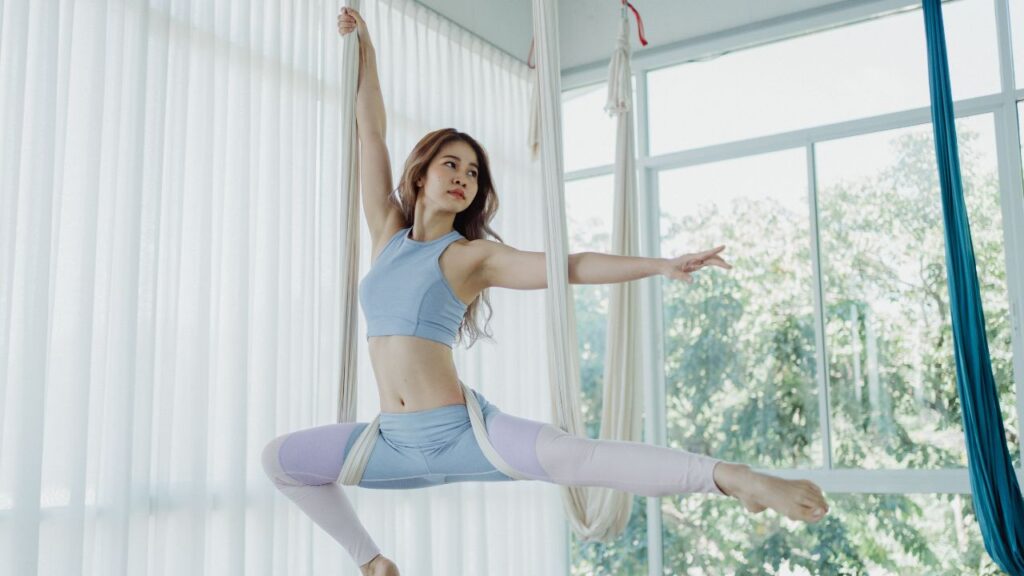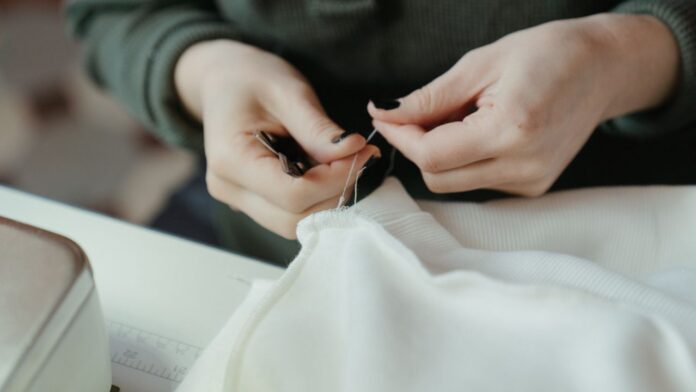The right fabric for bra making is key. It must be comfortable and breathable to cradle the breasts, absorb sweat and resist stains.
Duplex and simplex are low-stretch knit fabrics for lingerie, swimwear, and undergarments. They can also contain elastane for added stretch.
[PS: Also check out our post on The Power of Simplicity – Why Black and White Dresses Are a Must-Have.]
Cotton
In a bra, there are many types of fabric to choose from. When looking for bra making fabric to make the cups think thin, smooth, and strong (this goes for lace as well). You want a cup that will contain and shape your breasts without irritating them.
For the frame and bridge of your bra, look for low to no-movement fabrics like cotton, lingerie cotton, silk, or nylon. If you choose to use a stretch lace for your band, ensure it has enough give or that a stretchy fabric like power mesh is used underneath it.
Lastly, your bra will need a fabric to line it with. If this is your first time sewing a bra, we recommend sticking a run-resistant knit for the most stable results and moving on to other fabric options in your muslin process. Ultimately, what type of fabric you choose will depend on the bra you are making and how it will be worn (and how often). So take your time and be patient while shopping for your bra fabric.
Silk
The material you choose can significantly impact how comfortable your bra will be. This is especially important if you’re sewing a support garment. The right fabric will provide rigidity and comfort while remaining breathable. It should also wick moisture away from the skin to prevent sweating.
Various fabrics are used in lingerie and bras, including cotton, silk, nylon, and stretch fabric. There are a variety of weaves and finishes for each of these fabrics. Each has its characteristics, but they all have one thing in common: they’re designed to be worn next to the skin.
For example, silk fabric like charmeuse has a high surface shine and is often used in structured bras for a smooth look under clothing. It also stretches well and drapes easily, making it ideal for the band of a bra. In contrast, crepe has a matte finish and provides moderate stretch for the cups and frame of a bra. Spandex is a great choice for cup fabric because it’s soft, comfortable, and stretchy. It’s usually mixed with other fabrics, such as polyester or nylon, to add strength and durability.
Duplex
Duplex is a low-stretch knit fabric used extensively in lingerie and bra-making for strength and support. It has very little mechanical give on the cross grain and no stretch lengthwise, which makes it a great choice for bra cups since they should have minimal movement to hold and shape breast tissue. Duplex is also reversible, with one side matte and the other shiny for a subtle or bold look. It’s best to line Duoplex with a recommended bra lining fabric or seam tape to avoid rubbing against the skin.
While lace may deviate from the thin, smooth, and strong characteristics of cup fabric, it’s important to consider this when choosing a type to make your bra. The last thing you want is to have rough, scratchy, or abrasive material touching your skin.
The bridge and frame of a bra should be made from a stable, low to no movement fabric like power mesh or woven fabric that’s stabilized with a tricot interfacing. It’s best to test any fabrics you wish to use for these areas in your muslin process.
Simplex
Bras are all about comfort – and that’s something that can be affected by fabric choice. If you’re making a day-to-day comfort or t-shirt bra, avoiding fabrics with too much texture adds to the friction between your skin and the fabric. Instead, opt for a soft cotton fabric that is breathable and absorbent to help keep your skin feeling fresh and dry.

For a more luxurious feel, silk is hard to beat. Its velvety softness and luxury connotations make it the go-to fabric for those special occasion bras. It’s important to remember that silk needs extra care, so it’s not the best option for those Monday-Friday comfort or everyday workhorses.
Bras consist of many components, including the cups, band, lining, and straps, so choosing the right fabric for each is crucial. The cup fabrics need to be thin, smooth, and strong. Lace deviates from this rule, so test your kit’s recommended lace during the muslin process (if needed). The band should have some stretch to allow for bust fluctuations and support the underwire.
Tricot
Bras may be made from a wide variety of materials. The fabric you select will vary depending on the bra you are constructing. The finest bra fabric will be flexible and supple and withstand heavy use.
Your bras’ level of support and how comfortable they are will depend on the material you choose for them. For instance, a lightweight nylon tricot fabric that is soft, supple, and doesn’t require many fastenings like buttons or zippers is perfect for constructing dancewear and costumes.
The average cost of a yard of this type of fabric is around $7. However, the price can vary depending on the manufacturer, retail brand, and fabric quality. A higher-end material will be more expensive, but it will offer superior qualities and a long lifespan. Nylon can also degrade in the sun, so if you use this fabric for your bras, it’s important to keep checking them for signs of fading.
Also Read:

